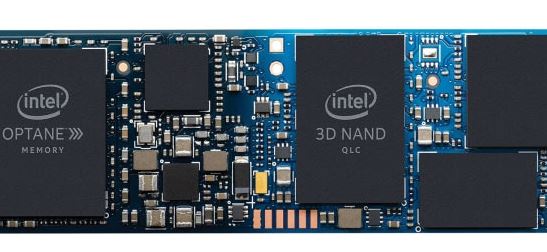Intel Optane H10 NAND memory | |

| |
 We can not say that hybrid drives-something fundamentally new. In the early years after the advent of the SSD market, some manufacturers began to produce drives and systems that combined the advantages of the speed of NAND flash memory with the cheapness of the capacity of the good old magnetic storage. There are two variants of such Association. In the first case, a NAND chip is added to the hard drive and a smart enough universal controller is developed that effectively uses such a cache memory as Seagate did in its SSHD family. The second is to use two physically separate SSD and HDD devices, but represent them as a single logical volume using software. This is how Apple Fusion Drive technology works. At CES 2019 Intel introduced a new type of storage systems: Intel Optane Memory H10 with SSD. The H10 is made in the format of 2 x 2280 and uses the memory of QLC 3D NAND as a large high — capacity storage, and the 3D XPoint is used as a high-speed cache. It's not entirely clear what strategy Intel is using, but the H10 sample shown includes two separate controllers — one for Optane and one for flash. The presence of two separate chips may indicate a software approach, as in existing systems that use small Optane drives to speed up the system. In fact, we can talk simply about placing two devices on one relatively compact Board. At the moment, there are few details, but Intel promises that the H10 will debut in thin laptops, monoblocks and small-format desktops in the second quarter of this year. The drive will be presented in three versions: 16 GB Optane with 256 GB flash memory, 32/512 GB and 32/1024 GB. | |
| Views: 764 | | |
| Total comments: 0 | |
No entries.